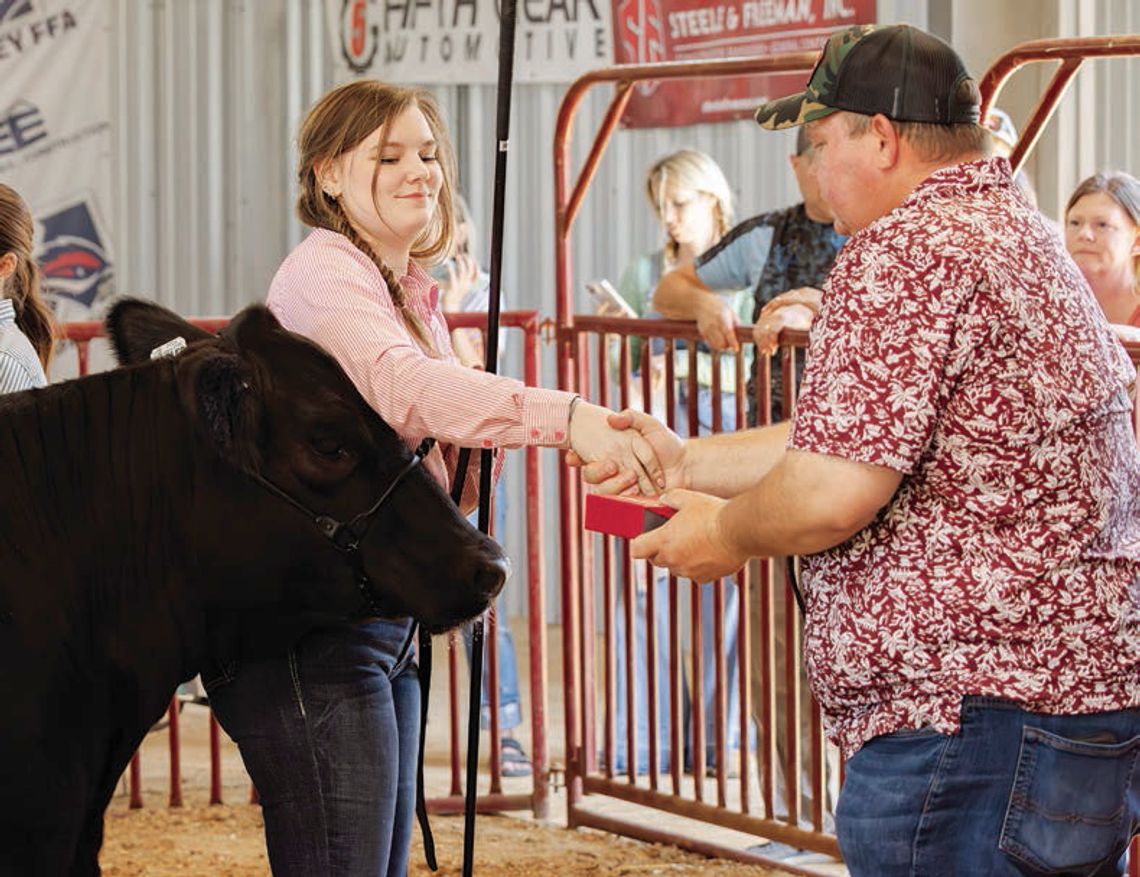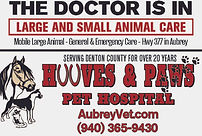Head ag teacher Steven Seale talked about the value of the annual local show for the district’s growing program.
Seale talked cost reminding that raising animals is an expensive proposition and saying the local show gives students a final opportunity to mitigate those costs.
“It’s astronomical, because some of these kids really can’t afford it,” Seale said. “What it’s doing for them is that check will pay for the next year’s project.”
The local show gives buyers from the community an opportunity to give back to the program by purchasing animals that didn’t sell during the show season.
“At the major shows, you’re rolling the dice,” Seale said. “Like all your commercial or breeding animals, they don’t make sale at any of those major shows and if they don’t make sale, they don’t get paid for any of those.”
Aubrey students recently gained the ability to take on a plethora of projects per student, something Seale said was a gamble given how stiff the competition can be at major shows.
“The kids that’ll buy an animal for every single livestock show, they’re spending $1,500-$2,000 on every single one of them and they’re lucky if they get a sale slot, which will pay $2,500 and up,” Seale said. “Let’s say you take a market pig to San Antonio—most of those kids are getting $75-$150, so they’re taking a hit.”
He did not, however, say kids should only have one ag project a year.
“The thing I always tell kids is, if they’re going to show one, they ought to show two or three, because these animals are fragile and they just die like crazy,” Seale said. “They can go to a show and a pig from Tyler is there is sick and gets your pig sick and the next thing you know, your pig is dead.”
As the program continues to grow alongside the district, Seale said he and his team have no intention of limiting their numbers.
“Our philosophy is, if the kids are there, [we’re] going to buy the panels, we’re going to buy the stuff to support them,” Seale said. “If this program keeps growing, and we’ve got an empty field right there, it’ll be time to build a new barn.”
Director of CTE and Accountability Dr. Jonathan Lee gave further insight.
“They include everyone,” Lee said. “They really like to recruit and find students that are looking for somewhere to belong, so they get what you might call a nontraditional student that might not have an ag background but see an opportunity in them to grow. That’s why you see our program continue to grow.”
Some students, like Lexi Gravely, find other ways to up their participation without further taxing the district’s rapidly filling complex. In addition to her goats, Gravely raises chickens.
“I chose chickens because they’re a challenge but not a challenge,” Gravely said. “For raising them, it’s a 50/50 thing. You don’t know if you’re going to get a good or bad batch.”
She explained her chickens, despite their diminutive stature when compared to a pig or heifer, represent a substantial time investment.
“When you raise these broilers, you get them a day or two old and you have to stir them every hour and provide them with a lot of food and fresh water,” Gravely said.
That commitment and responsibility, Seale said, is the most important part of having a kid participate in ag, despite the costs.
“I can tell you, because I was a coach, and agree athletics has a huge impact on kids because it makes people dependent on their kids, but that’s a living being , a creature that lives, breaths and needs to eat, and if you don’t do your part, it dies,” Seale said. “It teaches them so much responsibility.”

















